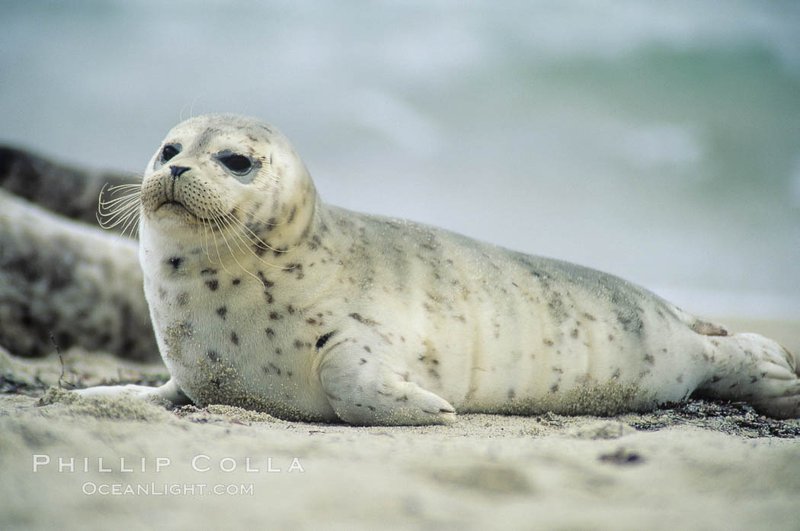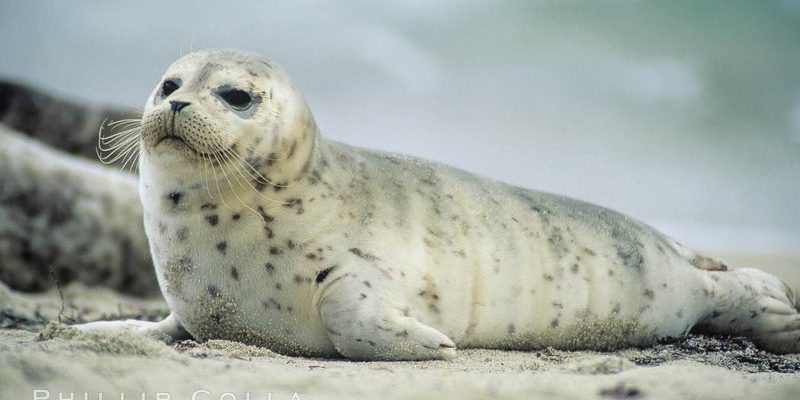
In this article, we’ll dive deep into the world of harbor seals, uncovering where they’re found and what habitats suit them best. We’ll explore their oceanic homes and the surprising spots you’d never expect to find them. So, grab a seat, and let’s swim through this topic together!
Understanding Harbor Seals
Harbor seals, known scientifically as *Phoca vitulina*, are a common sight along the North American coastline. They have a chunky body, spotted fur, and a somewhat goofy, friendly face that makes them quite endearing. These seals are relatively small compared to other marine mammals, usually weighing between 100 to 300 pounds and measuring about 4 to 6 feet long.
When we talk about *where harbor seals are found*, it’s essential to understand their lifestyle. They’re primarily coastal inhabitants, favoring areas that offer a mix of land and water. This combination provides them with places to haul out (rest on land) and hunt for food, such as fish and crustaceans. Their preference for near-shore habitats means you’re likely to find them lounging on rocks, docks, or beaches but not venturing too far out into the open ocean.
You might be wondering how these seals adapt to various environments. Well, like many animals, their survival depends on having access to food and safe resting areas. Whether they’re basking in the sun on a rocky ledge or swimming through a river, harbor seals have a remarkable ability to thrive in diverse habitats.
Oceans: The Primary Habitat
The ocean is undoubtedly the primary playground for harbor seals, particularly in the cold waters of the North Atlantic and North Pacific. They inhabit coastal areas from Alaska all the way down to California, and across the Atlantic, you can spot them along the shores of Maine to as far south as Virginia.
One of the great things about harbor seals is their ability to thrive in different oceanic environments. You’ll often find them in bays, estuaries, and fjords where they can access ample food sources. It’s kind of like choosing a favorite restaurant; they look for places with plenty of delicious fish!
Moreover, harbor seals are often spotted near coastal fishing ports. It’s not uncommon to see them gathering around fishing boats, waiting for scraps. This behavior shows how adaptable they are, taking advantage of human activities to find food. However, while they’re clever, it’s crucial for them to maintain a safe distance from boats and fishing gear, as they can be easily disturbed.
Harbor Seals in Rivers and Estuaries
While we typically associate seals with the ocean, harbor seals have a surprising affinity for freshwater environments as well. They often venture into rivers and estuaries in search of food and safe hauling spots. This behavior is especially common during the mating season or when juvenile seals are learning to hunt.
In many regions, harbor seals can be spotted traveling up rivers that lead into the ocean. For instance, the Columbia River in Washington and Oregon is known for its seasonal visitors. As they travel upstream, they might take advantage of the rich fish stocks, like salmon, making their way to spawning grounds.
However, you might wonder, do these seals face any challenges in river habitats? Yes, indeed! Freshwater areas can be risky due to boat traffic, pollution, and habitat destruction. It’s crucial to keep these environments clean and safe to ensure harbor seals have a sustainable place to thrive.
Coastal Haul-Out Sites
Coastal haul-out sites are essential for harbor seals. Think of these spots as their rest stops, where they can bask in the sun, socialize, and take a break from the water. These areas include sandy beaches, rocky coves, or even man-made structures like piers and docks.
These haul-out sites are vital for their health. They allow seals to avoid predators, regulate their body temperature, and give birth to pups. Harbor seals typically haul out in groups, providing a sense of security in numbers. Watching them pile together can be a delightful sight, almost like a seal-themed cuddle pile!
However, it’s important to note that harbor seals can be sensitive to human disturbance. If you’re ever lucky enough to see them, remember to keep a respectful distance. This ensures they can relax and not feel threatened. Local regulations often protect these haul-out sites, reminding everyone to share the coast responsibly.
Effects of Climate Change on Habitats
As with many marine species, climate change poses significant threats to harbor seals and their habitats. Rising sea levels, ocean acidification, and shifting prey availability can disrupt their way of life. For instance, warmer ocean temperatures may affect the distribution of fish, leading to fewer food sources for these seals.
Moreover, changing ice patterns in polar regions can impact seal habitats. Some harbor seals rely on sea ice for resting or nursing their pups. If ice melts too early in the season, it can affect their reproductive success and overall population health.
Here’s the thing: protecting harbor seals goes hand-in-hand with taking care of their environments. By supporting conservation efforts and being mindful of our impact on the ocean, we can help ensure that these charming animals continue to thrive in their natural habitats.
So, there you have it! Harbor seals are relatively common yet endlessly fascinating creatures that call our oceans, rivers, and coastal areas home. Their ability to adapt to various environments highlights their resilience and the importance of preserving their habitats. Whether you see them basking under the sun on a rocky shore or swimming gracefully in a river, these seals are a reminder of the rich biodiversity in our waters.
Next time you think about harbor seals, remember their journeys between oceans and rivers, and how vital it is to protect the areas they inhabit. By fostering a deeper understanding of these amazing mammals, we not only appreciate them more but also contribute to their ongoing survival. Let’s keep our coasts clean and celebrate these incredible marine neighbors!

